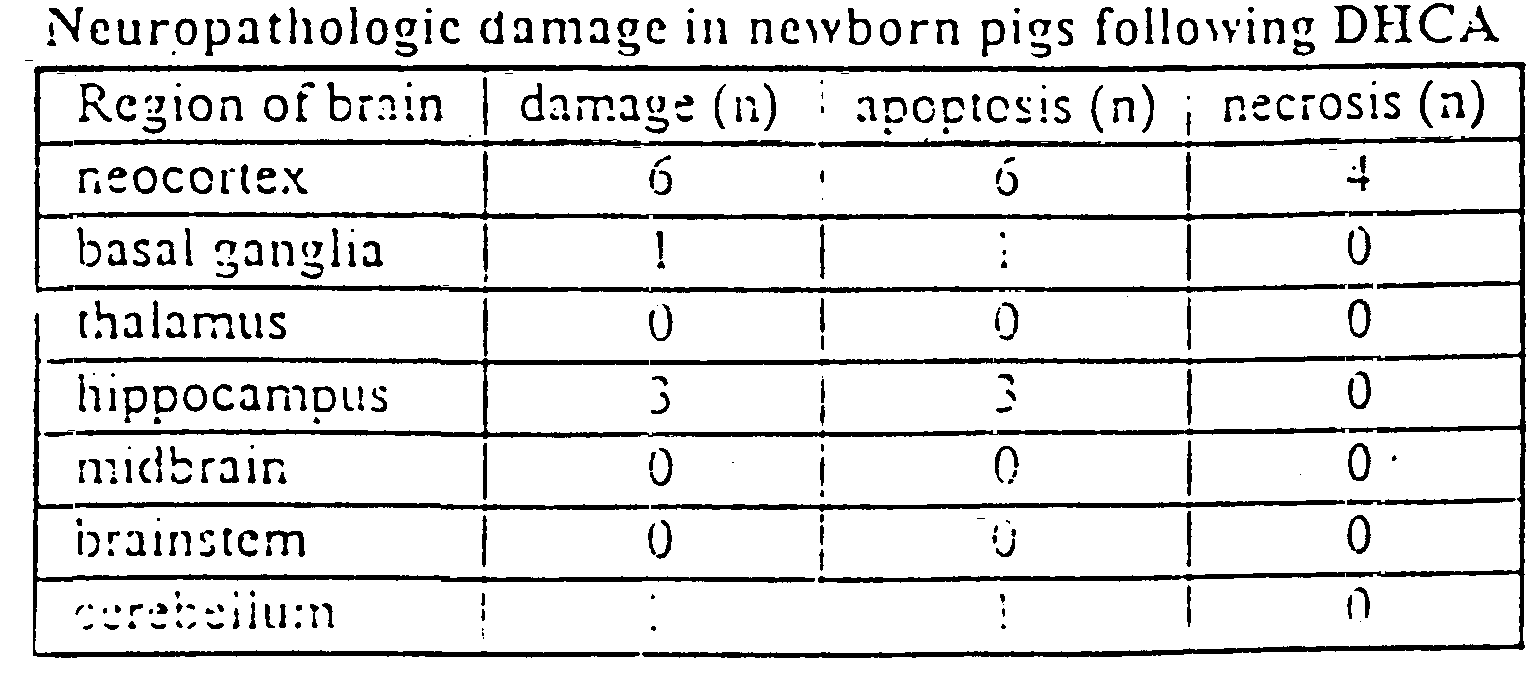
| 11 th Annual Pediatric Critical Care Colloquium |
| Session/Time | Neurology/Fri, 10:00 - 12:00 PM |
| Title | Characterization of the Neuropathologic Damage After Deep Hypothermic Circulatory Arrest (DUCA) In Neonates |
| Author | MA Priestley, MD; CD Kurth, MD; IB O'Hara, MD; R Raghupathi, Ph.D; and J Golden, MD |
| Affiliation | Departments of Anesthesiology/Critical Care Medicine, Pathology and Neurosurgery. The Children's Hospital of Philadelphia and University of Pennsylvania, Philadelphia, P,4 |
| Introduction | The use of DHCA in neonates for heart surgery poses risk of brain damage. In mature animal models, parenchymal necrosis or selective neuronal necrosis characterizes DHCA brain damage in vulnerable brain regions: striatum hippocampus, neocortex, thalamus, and amygdala. Following riorrnotherniic brain ischernia, cell death may occur by necrosis or apoptosis. Apoptosis is a programed cell death whereas necrosis results from pathologic failure of homeostatic mechanisms. This study sought to characterize DHCA brain damage as necrotic or apoptotic in a newborn pig model. |
| Method | Six piglets aaed 5-10 days were anesthetized, cardiopulmonary bypass (I-PB) cooled to 20' C brain temperature and underwent circulatory arrest for 90 minutes. Aftenvards, CPB was reinstituted, piglets were renvarmed and separated from CPB. After 43 hour survival, brains were perflised-fixed and assessed hi stologically. Apoptotic cells were identified as having condensed and/or fragmented nuclear bodies with shrunken cytoplasm and stairied TUNEL positive. Necrotic cells were swollen, cosinophilic and accompanied by inflammation. |
| Result | All piglets had neuropatholoaic damage and behavioral evidence of brain injury. Damace was located mainly in the neocortex and was apoptotic (table). Necrosis was occasionally seen in some animals. Apoptotic neurons occurred in groups interspersed among normal appearing neurons. 'Me superficial neocortex was more damaged than deep. |
| Conclusion | Our results
ndicate DHCA brain damage in neonates is mainly apoptotic. Apoptosis occurs normally in
neonatal brain through activation of genetic programs. Following, DHCA, however, the
activity of this cell death pathway increases markedly.Therapies to block apoptosis may
help prevent DHCA neurologic sequelae. |
Use your browser's back button to return to the appropriate index of abstracts...
Back to PCCC 98 Abstract Introduction | Back to PCCC 1998